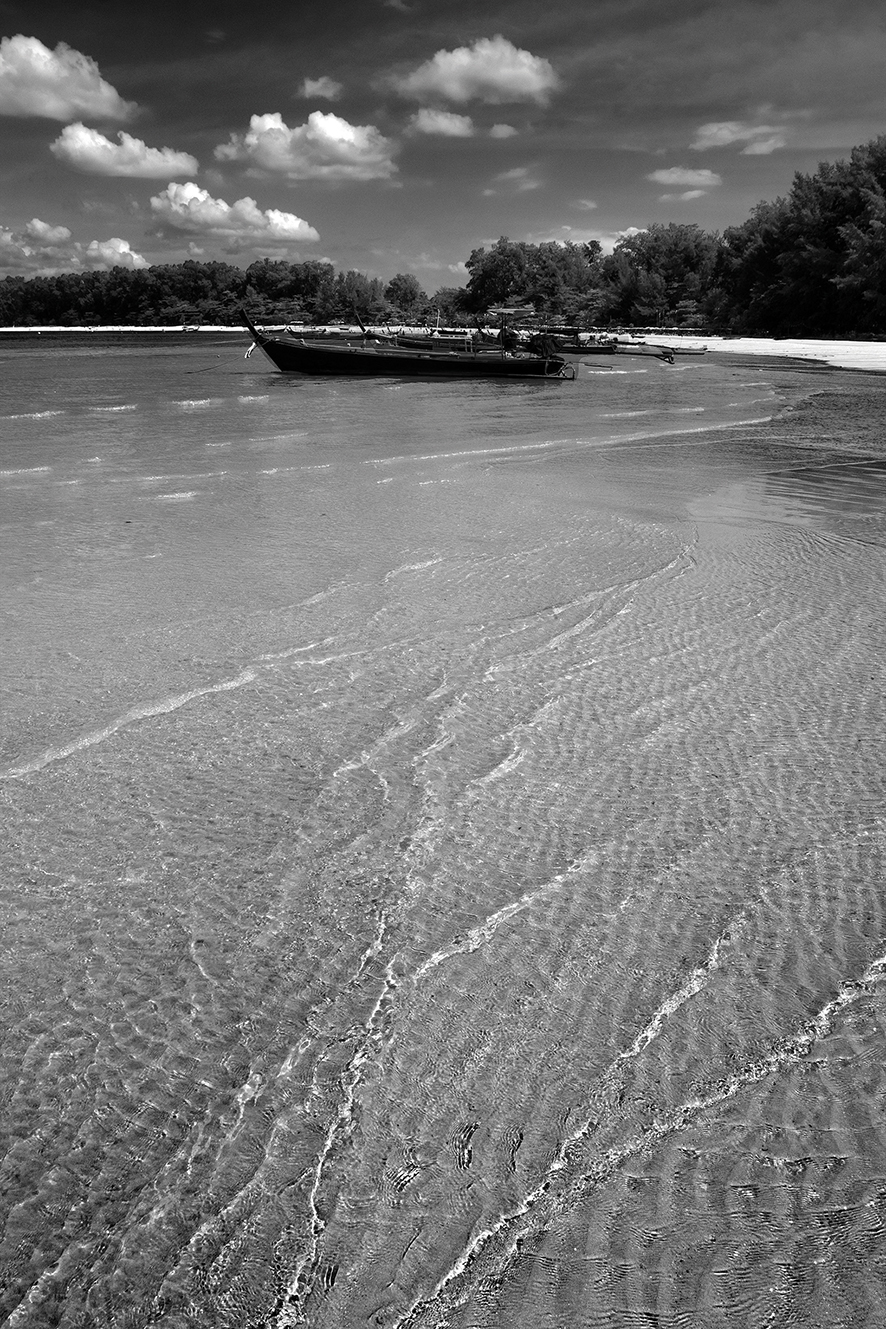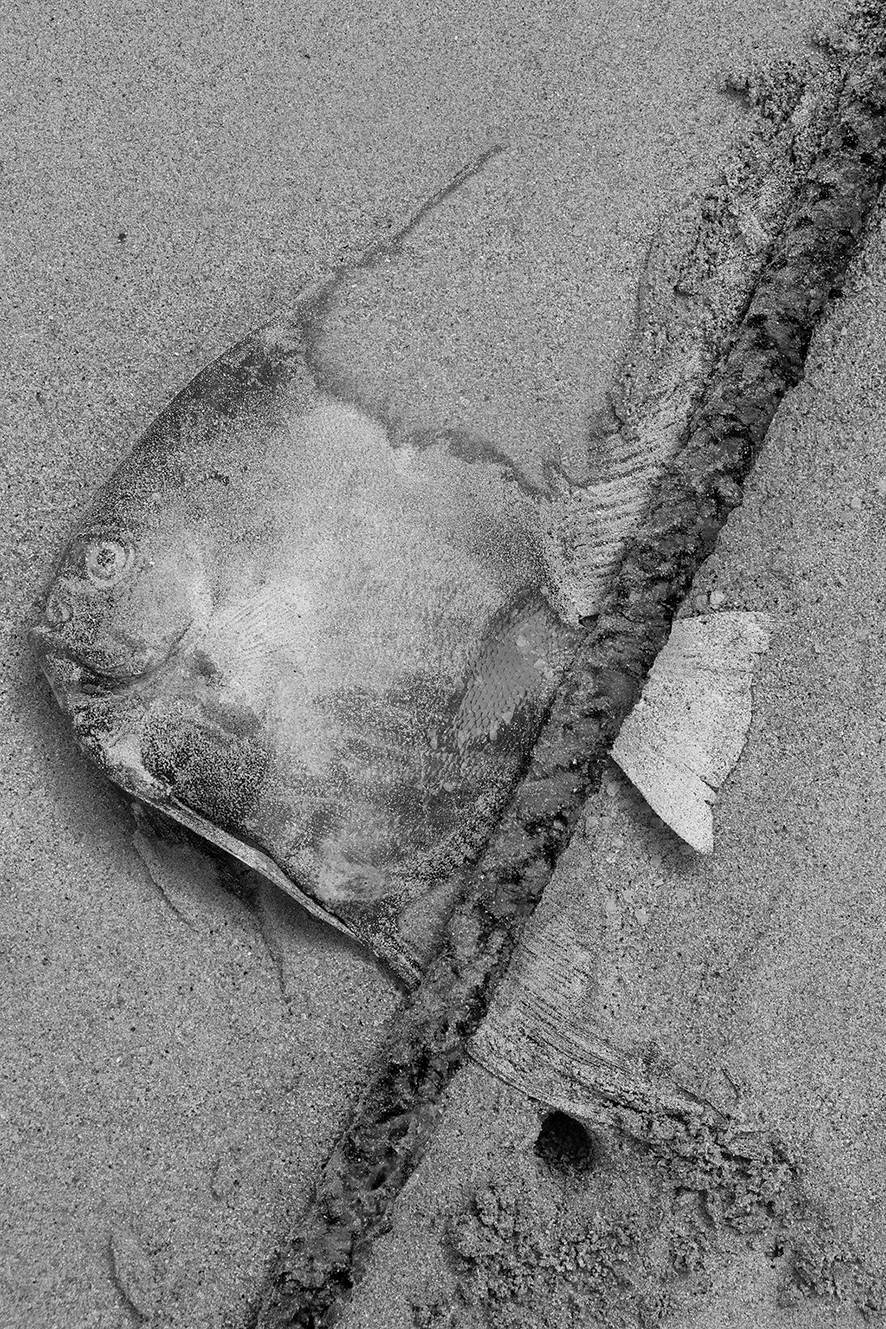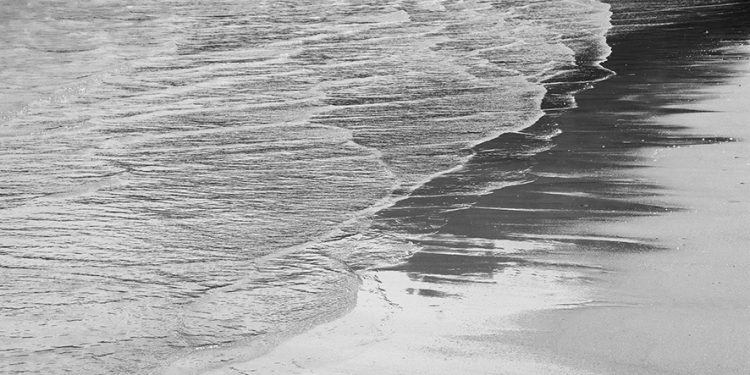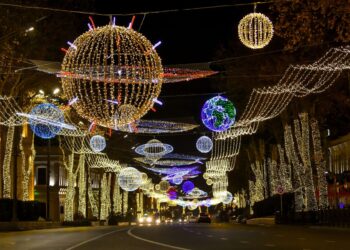Back now in chilly Tbilisi. Although the pilot on our flight from Istanbul had mentioned “clear skies” in his destination weather report, it was actually sleet which greeted us as we got into our taxi. Huge contrast from two weeks of wearing silk shirts, swimming trunks and sockless Crocs on tropical Phuket island, Thailand! A holiday my wife and I and our Svan friends will never forget.
Returning to the same beach (Naiyang) from our rented condo time after time gave us a slightly deeper familiarity with it, and looked me as a photographer to dig a bit into what this 1 km or so stretch of sand and sea had to offer. The pattern-seeker in me, too, woke up and began to look around.

The slope of sand to sea is very shallow here (unlike, say, Batumi). As the tide was in a different position each visit, I had a chance to explore its effects on the sand. Although I was as far from the pure, unrelieved sands of a desert as I could be, here at the shore there was wonderful variety displayed in the textures made by the endless ebb and flow of the water. Although there were people, flotsam and jetsam and other irregularities moving all around too, I did my best to eliminate these distractions from my frames. I was looking for pure form, especially that which would look equally good in either full color or black and white.
I have already mentioned the miraculous once-per-tide textural play of the tens of thousands of tiny beach crabs as they excavated holes for themselves in the sand. Each hole’s sand they would compact into tiny balls, much smaller than a pea, and throw or drag these out of the hole… in PATTERNS. When you looked up from one such hole and saw half of the width of the whole beach covered with these designs, it was awe-inspiring. If I was a David Attenborough, I would have the resources to cordon off a small section of the beach, set up a camera on a tripod, and make time-lapses of each crab at work, and end by slowly zooming out to the whole magnificent scene of thousands of parts. I can see it in my mind’s eye, even if I can’t film it.
Also, I noticed the momentary shadows made by the very end of each incoming wavelet on the sand an inch or less below it. Thank God for digital cameras: I could take frame after frame of these events in search of a few which were perfect examples of what I was seeing. Again, color was not necessary, a distraction even from the forms I was seeing and shooting. Delight, not possible on a beach of bigger waves. It was the very shallowness of the water which gave me what I was looking for.

I ended up with some shots trying to show everything together, with a wide-angle lens: the tiny wavelets and their shadows on the sand just under the water; textures of wave-stirred sand; sun and reflections on water in the middle distance; and finally, at the top, furthest away, old wooden fishing boats and the horizon, with a bit of clouds perhaps. People intruded only occasionally for scale, or I used just their walking legs at the top of a few scenes.
THIS is what makes me happy as a photographer: decoding the patterns of a particular place, whether it be Svaneti’s snow textures or seawater interacting with fine sand. These might be fine details, but they are worth noticing and recording. I’m not shooting for anyone else’s enjoyment, only my own; but if someone else finds pleasure in the results too, then I’ve also succeeded in communicating something to others. Magic.
Tony Hanmer has lived in Georgia since 1999, in Svaneti since 2007, and been a weekly writer and photographer for GT since early 2011. He runs the “Svaneti Renaissance” Facebook group, now with over 2000 members, at www.facebook.com/groups/SvanetiRenaissance/
He and his wife also run their own guest house in Etseri: www.facebook.com/hanmer.house.svaneti2
Blog by Tony Hanmer














